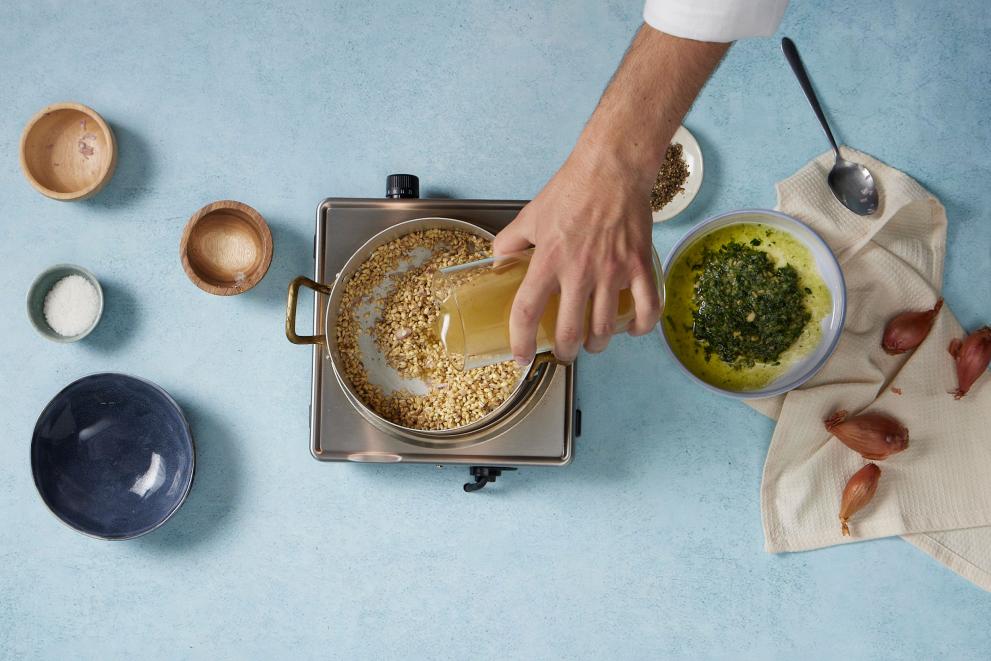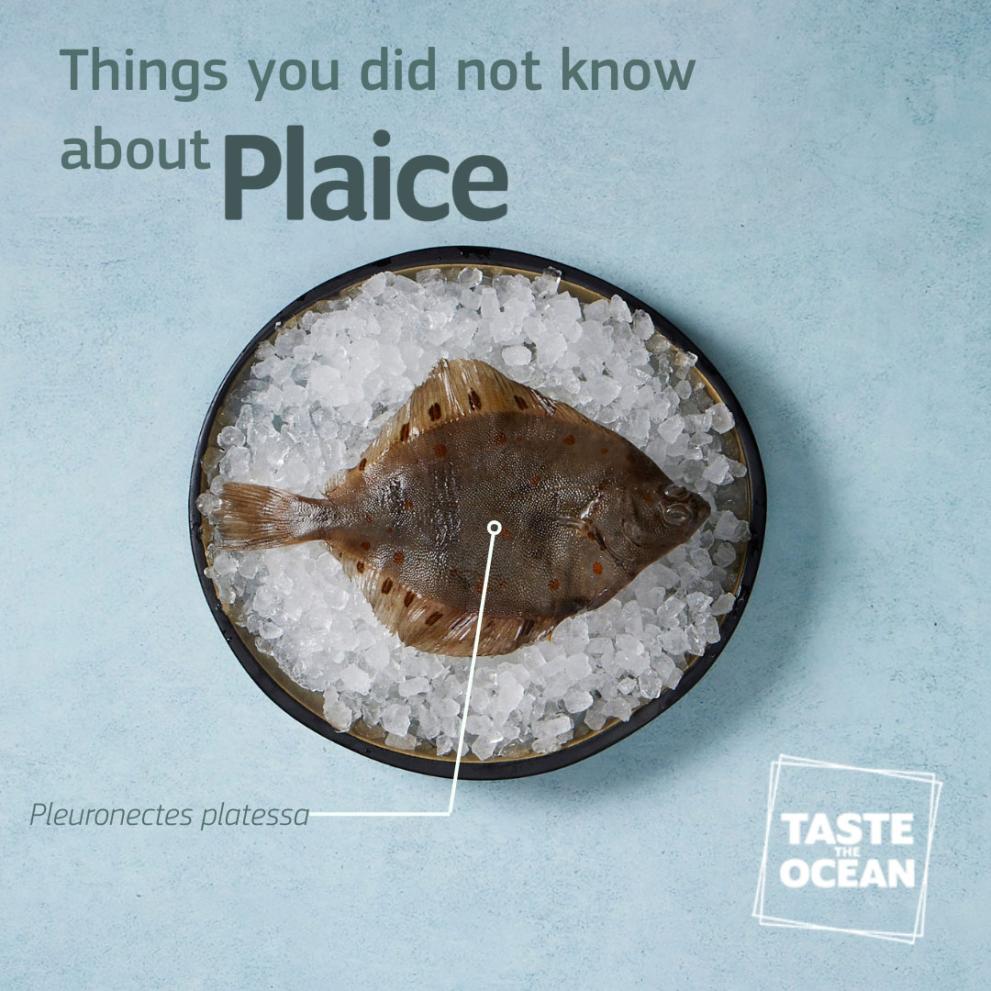Ingredients

- 2 fileted plaice
- Butter
- 4 tablespoons of fresh, blanched peas tossed in butter
- 8 small, clean mushrooms, cut in quarters and roasted in butter
Barley risotto
- 150 g pearl barley
- 1 shallot thinly diced
- Butter
- 300 ml of chicken stock
- Salt, pepper
- 2-3 tablespoons of herb pesto

Herb pesto
- 20 g of chervil, parsley, basil, chives, tarragon, and dill each
- 20 g pine nuts
- 20 g parmesan cheese
- 70 ml of olive oil
- Salt, pepper
Brown butter sauce
- 2 shallots cut in thin rings
- 100 ml white wine
- 20 ml chardonnay vinegar
- 200 ml of chicken stock
- 1 bay leaf
- 5 white pepper corns
- 1 pinch of Piment d’Espelette
- 1 lemon
- 100 g brown butter
- Salt
- Sugar
Preparation

- Season the fish and roast it on the skin side.
- Roast the pearl barley and shallots in butter and gradually fill it up with the stock to slowly cook it like a risotto until you still feel a light bite. Season it with the pesto, salt and pepper.
- Meanwhile, grind all of the pesto ingredients in a stone mortar until you get a fine pesto. Start with the salt, pepper and herbs, then add the nuts, cheese and lastly the oil.
- Finally, to prepare the butter sauce, bring the shallots to boil with the spices, vinegar and wine. Reduce it to a third. Fill it up with the chicken stock and reduce it to a third again. Strain it and season it with the lemon juice and the lemon’s rub. Whisk it with the brown butter.
Plaice

- When the plaice is born, it is a 'normal' fish with one eye on each side. As it grows, both eyes migrate on the same side of the fish and it becomes flat!
- Most plaice have their eyes on the right side, and a few of them have their eyes on the left: just like us humans, they can be left-handed or right-handed.
- Plaice are like chameleons: they can change colour in a few minutes to match the ground.
- Plaice have a unique feeding technique called "ambush predation". They bury themselves in the sand and lie in wait for prey to swim by before quickly lunging forward to catch them.

